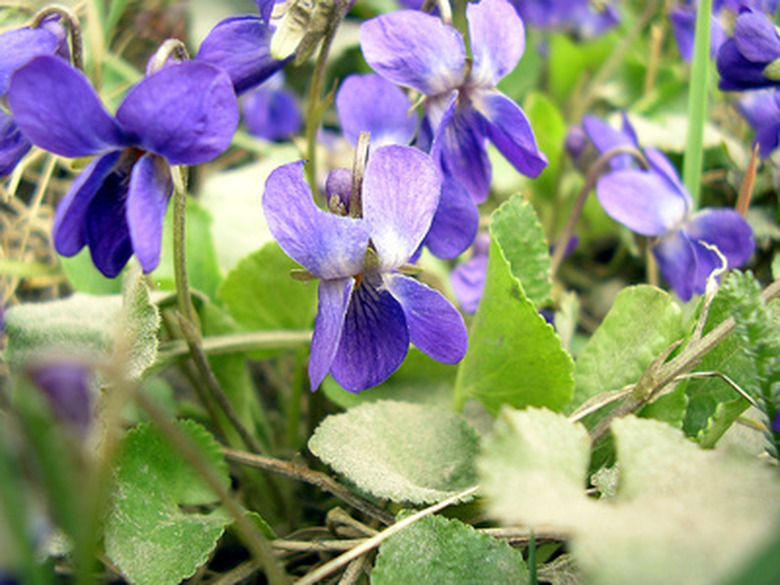Facts On New Jersey's State Flower
The state flower of New Jersey, the common blue violet, has the scientific name Viola sororia. The flower is an early bloomer, emerging as early as March and blooming through the month of May. The New Jersey state flower also has other names, including hooded blue violet and meadow violet. The Lady Bird Johnson Wildflower Center says that the flower has an association with the virtues of modesty and decency.
History
The New Jersey State legislature attempted to designate the common blue violet as the state flower as early as 1913, but failed to do so in a manner that would keep the designation permanent. According to the state's official Web site, this meant that the violet was in limbo as the state flower until 1963, when another try by the legislature to honor the flower also fell apart. Finally, in 1971, the garden clubs of New Jersey precipitated a bill that declared the common meadow violet as the official state flower.
- The state flower of New Jersey, the common blue violet, has the scientific name Viola sororia.
- The flower is an early bloomer, emerging as early as March and blooming through the month of May.
- The New Jersey state flower also has other names, including hooded blue violet and meadow violet.
Geography
The common blue violet has a wide distribution in the United States and Canada, occurring across almost the entire eastern half of America and well north of the border. You will find this particular flower in open woodlands, moist meadows, along the side of the road and on your lawn.
Identification
Common blue violets grow from underground rootstock called rhizomes. The leaves will grow upwards from the root, with the flowers on a stalk above the leaves. The leaves have a heart shape to them, may be as wide and as long as 3 inches, and are yellow-green to a darker shade of green, with scalloped edges. The flower is 3/4 inch in diameter and has five round petals. The color ranges from a medium hue of violet to a darker one. Some are white with a violet center.
- The common blue violet has a wide distribution in the United States and Canada, occurring across almost the entire eastern half of America and well north of the border.
- The leaves have a heart shape to them, may be as wide and as long as 3 inches, and are yellow-green to a darker shade of green, with scalloped edges.
Considerations
Place the common blue violet in partial sun or where the ground receives a light dose of shade and it should flourish. These violets will grow where there is full sun if the ground is damp enough. The plant grows best in rich fertile loam but can exist in clay loam that has organic matter mixed into it. The common blue violet has the ability to spread across an area once it establishes itself by the copious amounts of seeds it produces.
Benefits
According to the "National Audubon Field Guide to Wildflowers," the leaves of the New Jersey state flower have beneficial amounts of both vitamin C and A. You can cook them and eat them as greens or use them in your salad, although they have a rather bland flavor. Animals such as white-tailed deer and the cottontail rabbit will also consume the common blue violet where it is plentiful. Grouse, quail and mice will devour the seeds of the common blue violet.
- Place the common blue violet in partial sun or where the ground receives a light dose of shade and it should flourish.
